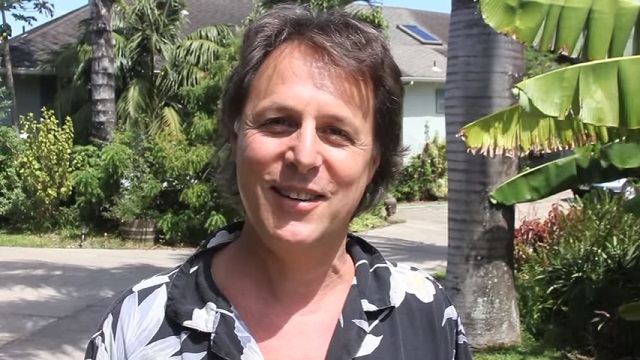
**Author’s note: My favorite way to write blogs is in response to people’s questions. Here’s an important one from M. (Thank you M! ) You can send topics or questions here.
.
Dear Wisdom Heart,
Could you please comment on the difference between: wisely stepping out of one’s comfort zone into more openness to life and Wisdom Heart consciousness, versus a lack of healthy, loving, personal boundaries?
Where is that edge? For me, maintaining healthy, peaceful and strong enough personal boundaries is often more of a challenge than not being vulnerable enough.
Thank you,
M
This brings to mind an old yogi story—
Once upon a yogi time, the wandering sage Narayana was seated in meditation at the edge of small village. As he opened his eyes, returning to everyday awareness, he found himself face-to-face with a large cobra.
The snake spoke, “Oh, Narayana, please instruct me in the practice of yoga.”
The guru was delighted by the request and began by explaining a foundational principle of the spiritual life: ahimsa.

“Ahimsa is the non-violent stance of the spiritual seeker,” he explained. “It is a way of relating to life with openness, curiosity, and mindful presence. By adopting the attitude of ahimsa, you will be able to meet all that arises with loving awareness; you will learn much and create minimum pain or suffering.”
Narayana explained that ahimsa is an essential practice for all yogis, and particularly for a cobra, whose very body was created and conditioned to strike out with violence and venom.
The snake thanked Narayana and slithered away into the dense undergrowth that ringed the village. The sage stood up and continued his pilgrimage, as he never rested more than three days in any single location.
A year, passed—and Narayana again found himself approaching the same village.
“I wonder how my cobra disciple is faring; and how his spiritual practice is developing,” he thought to himself.
Just then, the sage heard a groan rising from behind a nearby tree. Following the sound, Narayana discovered his disciple cowering in the dirt. The cobra’s body was bruised and battered, his sharp teeth were shattered, and his left eye was swollen shut.

“What has happened to you?” the sage exclaimed.
“Oh, guru-ji,” the cobra lisped through broken teeth, “You would have been so proud of me. I took up the practice of ahimsa with great dedication. When the young boys of the village threw stones at me, I smiled.”
The cobra continued, “They were surprised by my new gentle demeanor and came closer carrying sticks. But I continued to smile and welcome them. They struck me and beat me. They kicked me and tied me in knots. They broke my teeth and bruised my eye—but, I didn’t bite or strike back.”
“Oh, my disciple,” Narayana shook his head, “I told you not to bite. I didn’t say you shouldn’t hiss.”

Okay, so how does this relate to you—your practice and your life?
Here’s how: you can hiss.
“Hissing” means you can (and ought to) have clear, well-defined boundaries. You’re not here to be attacked, stepped on or put down. You’re here to realize, embody and express the radiance of life—as you. This requires boundaries.
We’ve got to have boundaries. On the earth plane, boundaries and distinctions are part of the game. We can’t not have them. But there’s a difference between a between a generative boundary and a contracted one; between a healthy loving stance and a defended one.
So, what’s the difference?
- In the defended stance, you set up defensive boundaries to protect your self and those you love from life.
- In the loving stance, you set up generative boundaries to strengthen yourself and those you love for life.
The defended stance pits you against life. Whatever arises on the other side of the boundary is alien; unlike you and threatening to your very existence. You can’t let them get too close. You can’t open up to them. Closed, rigid, impenetrable boundaries will protect you from them.
The generative stance places you in the midst of life. You’re already in the midst of life. You don’t need protection from life. Boundaries aren’t there to keep bad things out—they’re designed to create a structure that allows you to embody your deepest values and most awakened wisdom.
Wise and loving boundaries maintain your connection with the aliens. They can still puzzle you—but they don’t threaten. Rather than activate fear, the presence of the aliens triggers curiosity and interest.
But this doesn’t mean that you smile if the stones start flying. Being for life includes being for your body, mind, emotions and circumstances. If others approach with sticks—hiss. Set your boundaries with strength and clarity, but not with anger. Not with hate.
Set boundaries without painting them as the enemy.They’re not threatening you; they’re enacting their conditioning.
Wise boundaries allow you to see the suffering underneath the violence. You see how fear and inner fragmentation are expressed in mental, verbal and physical violence. You see how an inability to meet inner suffering with clarity and compassion produces a defensive stance towards the world.
You see how easy it would be to follow their lead. How easy it would be for you to shift from hissing to biting; to meet their defensive, suffering-fueled actions with your own.
Seeing this, with clarity and without blame, allows you to love and strengthen the boundaries that honor your deepest values so you can act in ways that embody those principles.
This kind of clarity, compassion and courage isn’t a given.
When the sticks and stones fly, you don’t have time for reflection. Reactivity erupts in the blink of an eye.
That’s why it’s important to do two things:
- Become established in meditative awareness.
- Become a student of how defensiveness arises in your body.
Through daily spiritual practice, you establish meditative awareness as your default mode. Before the sticks and stones are flying in your external world, cultivate the capacity to reside in loving awareness; to witness thoughts, emotions, sensations—all the patterns of body and mind—as they rise and fall.
Witnessing with loving awareness is the key. This capacity makes it possible for you to study the signature thought/emotion/sensation patterns that arise when you shift into defensiveness. As you study these patterns of defensiveness and reactivity, you discover something wonderful.
Your patterns of defensiveness and reactivity are marvelously redundant. Even if the situations that trigger the defensiveness change, the reactive pattern of thought/emotion/sensations don’t. The same thoughts, emotions and sensations arise. And this is particularly true at the bodily level of sensations.
The somatic signature of your reactivity repeats itself with virtually no variation. It’s an automated reaction that flows through a well-grooved neural pathway and arises as a signature pattern of sensations.
Whenever this pattern arises—unless you’ve cultivated meditative awareness—your attention tends to degrade, to fragment; and in reaction you throw up contracted, fear-based boundaries. This is the tendency but not the necessity.
Why?
Because as fast as reactivity moves, awareness is faster. It’s faster because it’s ever-present. You don’t have to generate awareness. It’s not a reaction to anything. Awareness—loving awareness—is already and always here.
Through the practice of meditation, you cultivate your capacity to live in, through and as loving awareness. You also become skilled at spotting—and through the innate radiance of loving awareness, dissolving defensive patterns as they arise.
But—you’ll still have boundaries.
When you feel an itch, you’ll scratch your head, not mine. You can tell the difference between someone throwing a stone and someone blowing a kiss. You can respond appropriately.
Recognizing the difference—somatically—between contracted boundaries and generative boundaries, allows you to incarnate your values skillfully.
You don’t lie down for the world to walk on you. You stand up, with loving awareness, and cultivate the boundaries that allow you to serve, savor and enrich life.
And by life, I mean your life—and the lives of all the aliens (inner and outer) that you meet on your path.
So, my dear cobras—what does this suggest to you? Share your comments below.
Love & Shanti,
E
P.S. Want to go deeper into the practice of cultivating loving awareness? This month in the Wisdom Heart Community we’re exploring, meditating and talking about How to Balance Challenging Karma: From Limitation to Liberation. If you’re interested in learning more, click here.
~
Author: Eric Klein
Images: elephant archives; original illustrations by the author
Editor: Yoli Ramazzina










Read 0 comments and reply